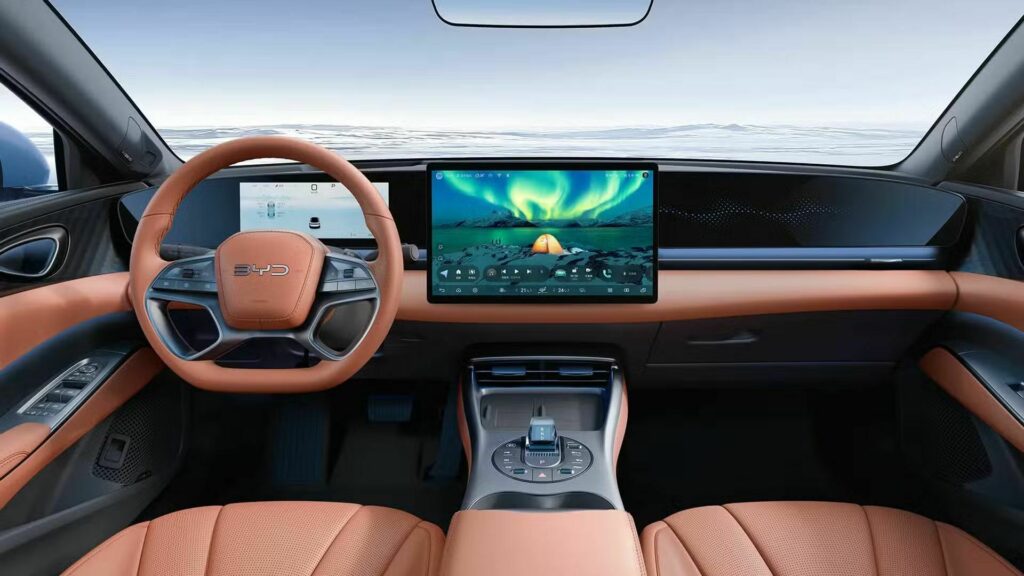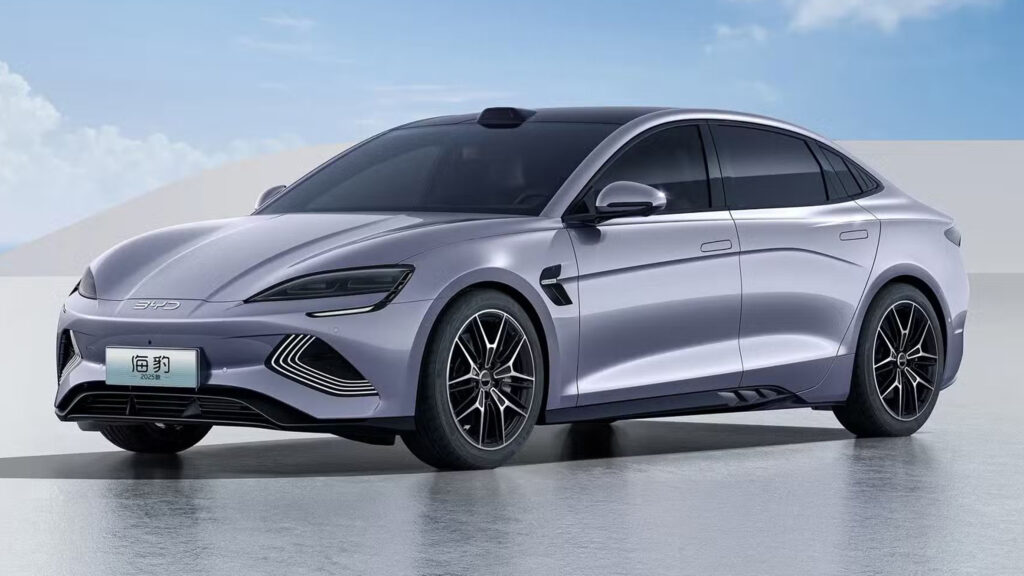- The carmaker has reduced the capacity of the Seal’s available battery packs but loaded it with more technology.
- Significant changes have been made to the electric sedan’s interior.
- Flagship models continue to produce 523 hp.
The BYD Seal has established itself as one of the most compelling alternatives to the venerable Tesla Model 3, and the Chinese conglomerate has already given it some important updates for the 2025 model year.
The most important change has been made under the skin. Gone is the 400-volt electrical architecture and a new 800-volt system is in its place. While BYD hasn’t said how much it has been able to increase the Seal’s peak charging rate, it has revealed it now takes just 25 minutes to charge from 10-80%, down from the 37 minutes of the outgoing model.
Read: 416 HP BYD Seal X Is The Production Version Of Ocean-M Electric Hot Hatch
Two battery options will be offered, consisting of a 61.44 kWh and an 80.64 kWh pack, promising CLTC ranges of 510 km (317 miles) and 650 km (404 miles), respectively. Like the outgoing model, the entry-level 2025 Seal will have a single 228 hp electric motor driving the rear wheels, while more powerful RWD variants will deliver 308 hp. Those seeking the ultimate in performance will still be able to opt for a dual-motor, all-wheel drive setup with 523 hp.
BYD has also upgraded the EV’s suspension, fitting the latest generation of its Disus-C adaptive dampers, which are said to improve stability, comfort, and handling.

Significant safety changes have also been made. The most important advancement is the availability of a roof-mounted LiDAR that will improve the Seal’s semi-autonomous driving systems, and add high-speed and urban Navigation on Autopilot, as well as Automated Valet Parking functions.
A slew of changes have been made to the cabin of the Seal, too. The most obvious update is the fitment of a redesigned flat-bottom steering wheel with four spokes that looks slightly more premium than the wheel of the earlier Seal models. BYD has also simplified the shape of the center console and altered the shape of the dashboard, adopting a new gloss black panel that runs across the entire width of the cabin.












